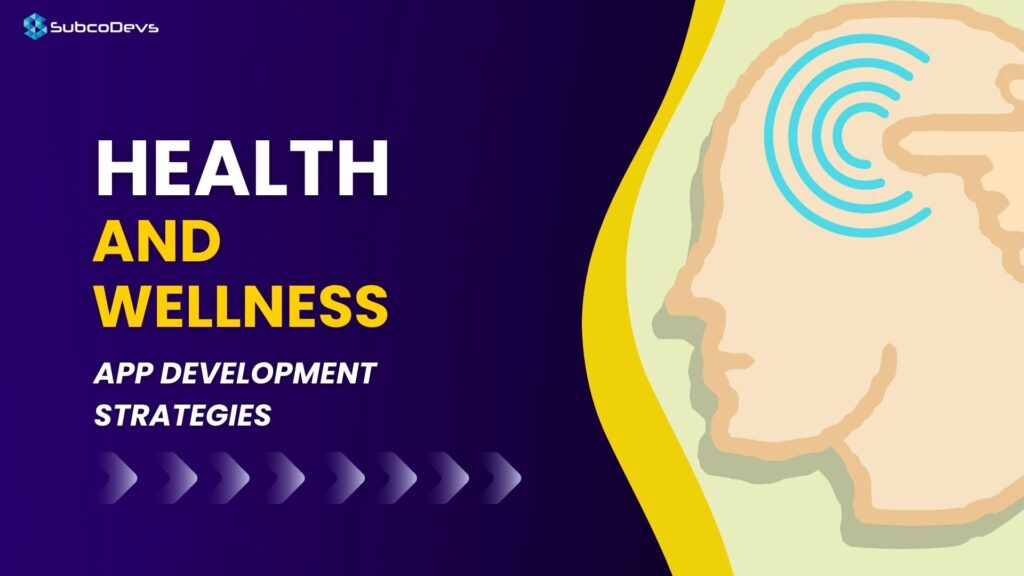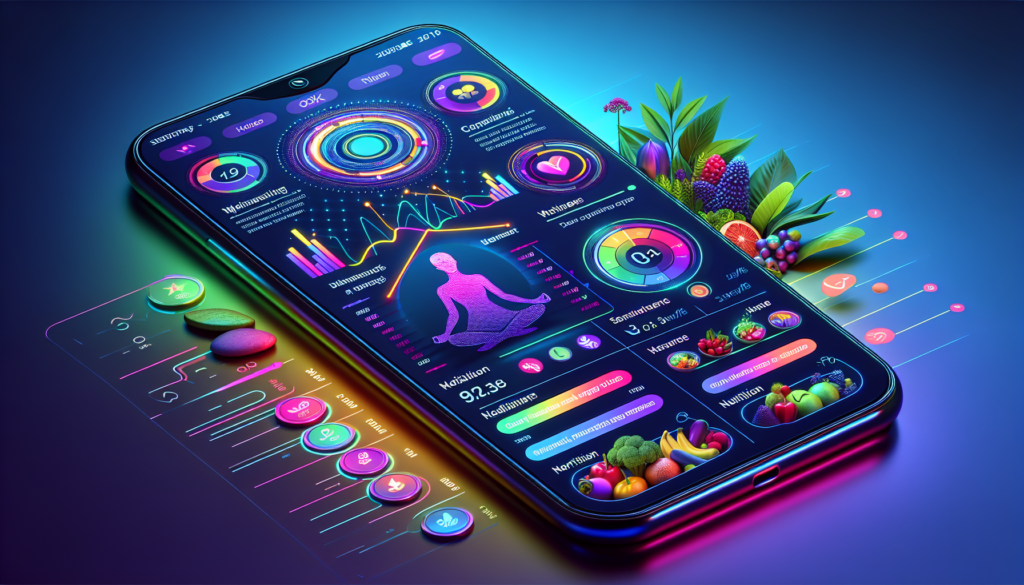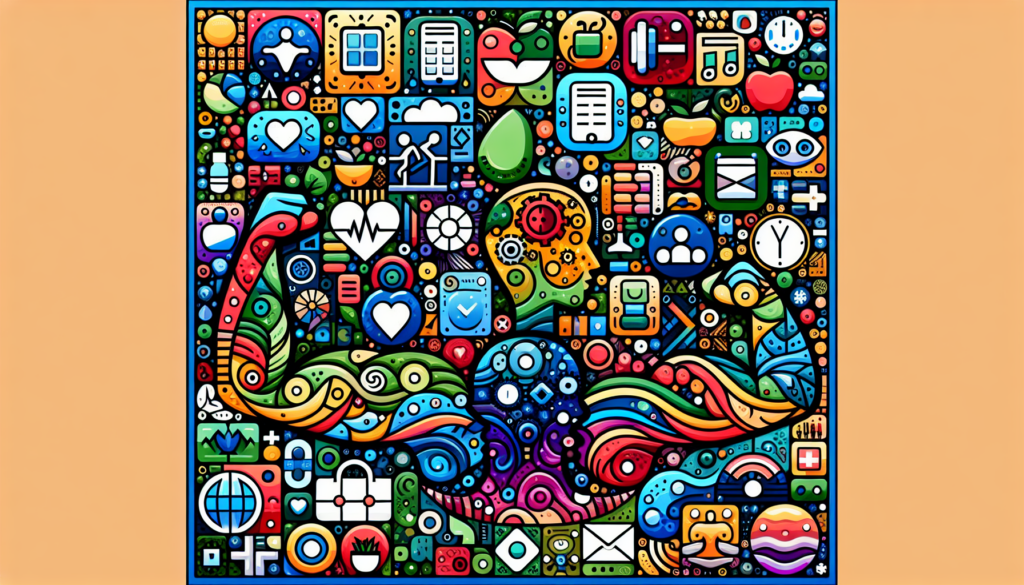Are you looking to develop a health and wellness app? Understanding the essential features and key steps in the health and wellness app development process is crucial. This article will provide an overview of what makes a successful health and wellness app and guide you through the main stages of development.
Key Takeaways
- Successful wellness apps prioritize personalization and engagement through features like tailored workouts, progress tracking, and gamification elements.
- Types of wellness apps include fitness, mental health, and nutrition apps, each focusing on specific aspects of well-being with unique features to cater to users’ needs.
- User engagement, feedback, and data analytics are crucial for optimizing wellness apps, enhancing user satisfaction and ensuring continuous improvement and relevance.
Understanding Wellness App Development
The wellness app market, a significant segment of the wellness industry, is growing rapidly, expected to increase by $3,072M at a CAGR of 7.2% from 2019 to 2023. This growth underscores the importance of wellness apps in today’s health and fitness landscape. These apps are designed to improve physical health, such as increasing cardiovascular health and reducing the risk of chronic diseases. They also offer a cost-effective solution for maintaining fitness, providing free or low-cost alternatives to gym memberships or personal training.
Wellness apps, such as a health and wellness app, have become indispensable for maintaining mental fitness as well. They provide a convenient and accessible way for users to stay healthy, as they can be used anytime and anywhere through smartphones. This accessibility is a significant advantage, making it easier for users to integrate healthy habits into their daily routines.
The wellness app development market includes a variety of app types, such as fitness trackers, meditation apps, and meal planning and nutrition apps. Each type of app focuses on different aspects of health, catering to the diverse needs of users. Anyone looking to create a wellness app must comprehend these categories and their unique features.
Key Features of Successful Wellness Apps
Successful wellness apps are characterized by several key features that enhance user engagement and provide personalized experiences. Many apps prioritize personalization by:
- Tailoring workouts and health plans to individual user data such as age, weight, height, and fitness level
- Providing recommendations based on user preferences and goals
- Offering progress tracking and goal setting features
- Sending reminders and notifications to keep users motivated and on track
This customization helps users achieve their health goals more effectively.
Tracking progress is another essential feature. Wellness apps often include tools for monitoring workouts, meals, and health metrics like weight and heart rate. Integration with third-party apps like Google Fit and Apple Health further enhances the tracking experience by syncing data on nutrition, sleep, and physical activity. Wearable devices also play a significant role, allowing users to track their activities and monitor data over time.
Wellness apps heavily rely on motivation and community building. Some key features include:
- Push notifications and reminders to ensure users do not miss their exercise sessions or health goals
- Social sharing options that allow users to share their progress and achievements with friends, fostering a sense of community and motivation
- Gamification elements, such as rewards and progress bars, to make the app more engaging and encourage habit formation.
These features work together to create a motivating and supportive environment for users.
Types of Health and Wellness Apps
Health and wellness apps can be broadly categorized into fitness apps, mental health apps, and nutrition and diet apps, each focusing on different aspects of well-being. Comprehending these categories aids in the creation of targeted and effective wellness solutions.
Fitness Apps
Fitness apps are designed to guide users through workouts, track progress, and provide virtual coaching. They often include features like guided workout plans and detailed exercise instructions, offering a workout library with routines tailored to various fitness levels and goals. This helps users find the right exercises for their needs, making it easier to stay motivated and achieve their fitness objectives.
Virtual coaching is a standout feature in many fitness apps, offering personalized advice and workouts that simulate the experience of having a personal trainer. Integration with wearable devices is another key feature, allowing users to track their heart rate, steps, and sleep patterns. Popular fitness apps like Fitbit and Strava, with over 50 million downloads each, exemplify the success of these features.
Gamification elements, such as earning points and unlocking achievements, make workouts more engaging and fun. Additionally, health and fitness app solutions are increasingly incorporating virtual fitness classes and telemedicine integrations to offer comprehensive wellness options. These features make fitness apps a versatile tool for maintaining physical health.
Mental Health Apps
Mental health apps are pivotal in stress management and mental well-being improvement. They often include features for mindfulness and meditation practices, helping users reduce stress and improve their mental health. Apps like Calm provide meditation guides, breathing exercises, and mindfulness programs, making mental wellness accessible to everyone.
Unique features in mental health apps, such as sleep stories narrated by celebrities and various soundscapes, add to their appeal. These features help users relax and improve their sleep quality, contributing to overall mental health. Sleep tracking is another common feature, providing insights into sleep patterns and helping users develop better sleep habits.
By offering a range of mental health support tools, these apps help users manage their mental well-being more effectively. The combination of meditation, mindfulness, and sleep tracking makes mental health apps a valuable resource for maintaining mental fitness.
Nutrition and Diet Apps
For promoting healthy eating habits and meal planning, nutrition and diet apps are fundamental. They often provide:
- Meal planning tools
- Integration with databases of recipes
- Customized diet plans
- Shopping lists and recipes
These features help users maintain a balanced diet and create meal plans tailored to their bodies and daily activities.
Some nutrition apps offer the following features:
- Personalized grocery lists based on users’ meal plans, making it easier for them to shop for ingredients
- Simplified meal planning process
- Assistance in developing healthier eating habits
- Diet tracking capabilities
These features are designed to help users plan their meals, develop healthier eating habits, and track their diet.
By offering a comprehensive suite of tools for meal planning and diet tracking, nutrition apps support users in achieving their health and wellness goals. These apps play a crucial role in helping users develop and maintain healthier eating habits.
Custom Fitness App Development Process
Developing a custom fitness app involves several critical steps. The first step is to identify your ideal customer to determine the app’s features, tone, and promotion strategies. Understanding your audience helps in creating an app that meets their specific needs and preferences.
Next, define clear goals and decide on the type of fitness app you want to create. This involves researching your competition to understand their features and user experiences. Developing a comprehensive fitness app requires a list of must-have features, such as video on demand, live streaming, and payment integration.
Choosing a monetization model is another important step. Options include freemium, subscription, or in-app purchases. Selecting the right monetization model can significantly impact the app’s success and user engagement.
Finally, here are the steps to develop a fitness app:
- Choose a development path: developing the app yourself or leasing from an OTT platform.
- Submit your design requirements, including logo, color scheme, typography, and images, to ensure the app aligns with your brand identity.
- Thoroughly test the app and get approval from app stores.
- Submit and publish the app.
Following these steps will ensure a smooth and successful fitness app development journey.
Importance of User Engagement and Feedback
Any wellness app’s success heavily depends on user engagement and feedback. User feedback provides real insight into the user experience, revealing what aspects of the app resonate with users and which do not. Collecting both qualitative and quantitative feedback helps developers understand user motivations and frustrations.
Methods for collecting feedback include surveys, questionnaires, and user interviews. Testing the Minimum Viable Product (MVP) by releasing it to a focus group for feedback can provide valuable insights. Regularly analyzing user feedback post-launch helps identify areas for improvement and refine app features.
Implementing changes based on feedback can:
- Increase user satisfaction
- Create loyal users who advocate for the app
- Enhance usability
- Ensure the app remains relevant and engaging
By continuously improving the app based on user feedback, developers can achieve these benefits.
Utilizing Data Analytics in Wellness Apps
In the development and optimization of wellness apps, data analytics holds a significant position. It offers a quantitative perspective on user behavior, helping identify areas for optimization. By analyzing user health data, developers can understand how users interact with different features and the frequency and duration of their usage.
Personalized recommendations can be generated through data analytics, enhancing user experience and engagement. For example, analyzing workout history, goals, and progress can provide tailored workout recommendations. Predictive analytics enables wellness apps to:
- Anticipate user needs
- Provide proactive interventions
- Send targeted notifications
- Deliver personalized content to re-engage users
Behavioral insights from data analytics can also be used to incorporate gamification elements, identifying effective game mechanics, challenges, and rewards. By leveraging data analytics, wellness apps can track user progress, visualize achievements, and keep users motivated and committed to their health goals.
Corporate Wellness Programs Integration
Integrating wellness apps into corporate wellness programs offers numerous benefits. It can lead to increased employee productivity and reduced absenteeism. Employers adopting wellness apps demonstrate a commitment to employee health, enhancing morale and workplace positivity.
Financial benefits, such as reduced healthcare costs, are another advantage for employers. Wellness apps can promote physical activity, mental health, nutrition, and stress management among employees. Personalized and engaging strategies, such as physical activity challenges and mindfulness sessions, can further enhance employee wellness.
Using wellness apps helps foster a culture of health awareness and better work-life balance in a demanding work environment. By integrating these apps into their operations, employers can create a healthier and more productive workforce.
Choosing the Right Wellness App Development Company
The success of your project fundamentally relies on choosing the right wellness app development company. Prioritize companies with extensive experience in wellness app development services and wellness software development to ensure they understand the unique challenges and opportunities in the industry. Skilled developers with expertise in programming languages and wellness-specific functionalities are essential.
Reviewing a company’s portfolio and client testimonials can provide insights into their history of successful projects and client satisfaction. Ensure the company offers:
- innovative features
- customizable solutions to meet specific business needs and user preferences
- transparent pricing structures
- detailed estimates for budgeting.
A well-defined development process, including stages like:
- Initial consultation
- Design
- Development
- Testing
- Post-launch support
is crucial for a reliable development agency. By choosing the right development company, you can ensure a smooth and successful wellness app development journey.
Post-Launch Support and Maintenance
For the long-term success of a wellness app, post-launch support and maintenance are imperative. Ensuring the app remains functional and updated post-launch is crucial to maintaining user engagement and satisfaction. Continuous monitoring of the app’s performance helps identify and address vulnerabilities.
Maintenance services often include:
- Performance monitoring to ensure the app delivers a seamless user experience
- Compatibility testing with devices and operating systems
- Bug fixing and troubleshooting
- Regular updates and enhancements
- Security audits and measures
This is particularly important for healthcare apps, which must function smoothly with compatible devices and operating systems. Companies like SubcoDevs offer a wide range of services, from initial consultation to post-launch support, ensuring a smooth development process.
Opting for flexible support and maintenance packages can keep software updated and minimize support costs. This ongoing support ensures the app remains relevant and functional, providing a positive user experience.
Summary
In summary, developing a successful wellness app involves understanding the market, incorporating key features, and utilizing data analytics. Engaging users and collecting feedback are crucial for continuous improvement, while integrating wellness apps into corporate programs can enhance employee well-being. Choosing the right development company and ensuring post-launch support are essential for long-term success.
Wellness apps have the potential to transform health and fitness by providing accessible, personalized, and engaging tools. By following the strategies outlined in this guide, you can create impactful wellness solutions that improve lives and foster healthier communities.
Frequently Asked Questions
What are the key features of successful wellness apps?
Key features of successful wellness apps include personalized experiences, progress tracking, integration with third-party apps and wearable devices, and community-building features. These elements are essential for a successful wellness app.
How do you choose the right wellness app development company?
Choose a wellness app development company based on their experience, skilled developers, positive testimonials, innovative features, transparent pricing, and a well-defined development process. These factors are crucial in making an informed decision.
Why is user engagement and feedback important in wellness app development?
User engagement and feedback are crucial in wellness app development because they offer valuable insights into user experience, which can guide developers in refining features and ensuring the app remains relevant and engaging for users.
How can data analytics enhance wellness apps?
Data analytics can enhance wellness apps by providing personalized recommendations, tracking user progress, and incorporating gamification to increase user engagement and motivation.
What are the benefits of integrating wellness apps into corporate wellness programs?
Integrating wellness apps into corporate wellness programs can bring multiple benefits such as increasing employee productivity, reducing absenteeism, lowering healthcare costs, and promoting overall physical and mental well-being. These apps can have a significant positive impact on the workplace.They help in fostering a healthier and more productive work environment by encouraging employees to adopt healthier habits and providing tools for stress management and physical activity.





